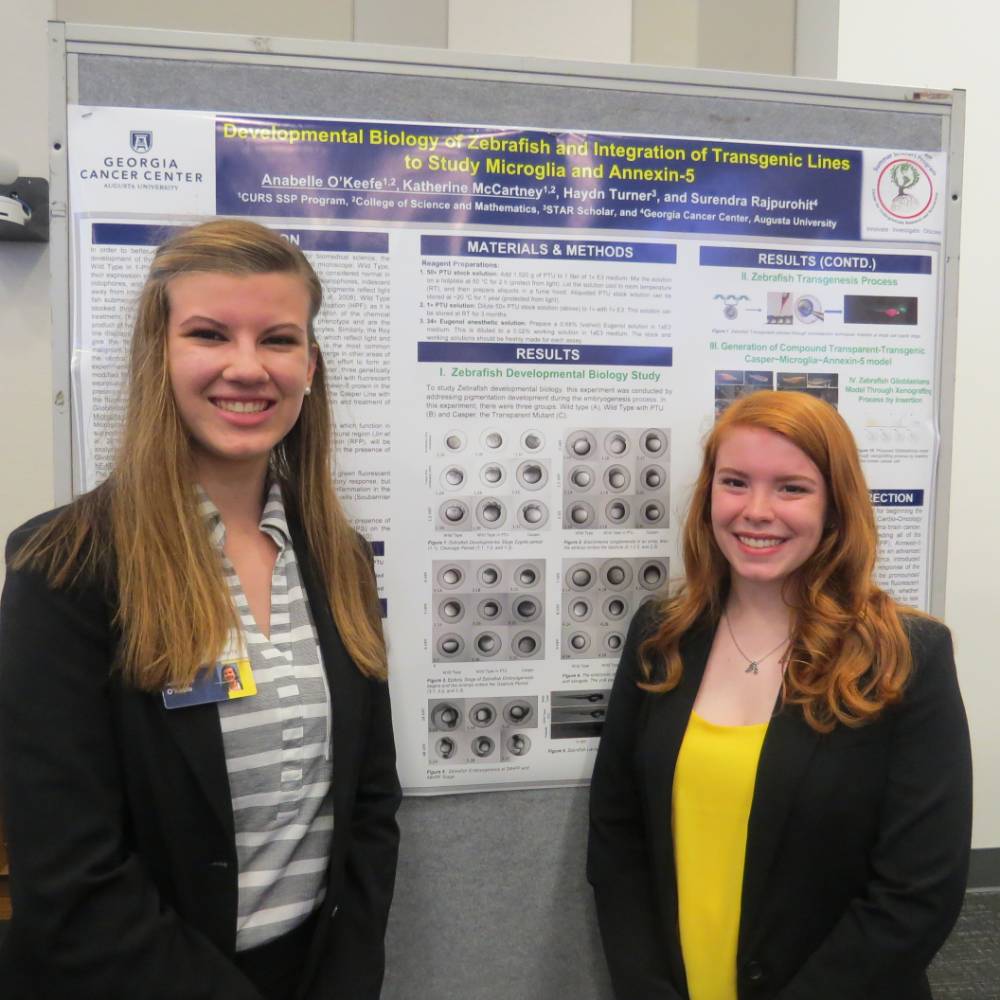
- CURS
- Summer Scholars Program
Summer Scholars Program
The Summer Scholars Program is an intensive hands-on research experience that allows AU undergraduate students to collaborate with a faculty mentor in the process of discovery. Students are paid a stipend for approximately 20 hours of research per week and engage with other student researchers in professional development workshops and social gatherings. Enrolled AU students from all disciplines are encouraged to apply.
Next Session: May 18, 2026 - July 17, 2026
Faculty Applications will be accepted November 1, 2025 - January 5, 2026.
Student Applications will be accepted February 1-15, 2026.
Read the SSP 2026 Call for Proposals
Apply through the InfoReady Portal
Program Goals
1. Advance high-impact scholarly activity that promotes significant student development,
strengthens academic achievement, and contributes to the research productivity of
Augusta University.
2. Provide intentional mentorship and professional development through collaborative
research and creative scholarship that cultivate meaningful and sustained faculty–student
engagement.
3. Deepen disciplinary knowledge and enhance evidence-based reasoning through active
participation in research and scholarly inquiry.
4. Develop advanced written and oral communication skills to effectively convey
purpose, methods, and outcomes to diverse academic and public audiences.
Program Expectations
In order to meet team and program objectives, all participants should be local to the Augusta area for the duration of the program and have availability during predictable times (generally 8am-3pm Monday–Friday). Participants therefore may not take or teach more than three credits while in the program. Students may not take a course with a lab if participating in the Summer Scholars Program. Courses with a lab require a great deal of time and attention and thus are not compatible with the Summer Scholars Program. Student housing is not included, thus students are expected to make their own housing arrangements.
Those who have travel plans that are not related to the Summer Scholars Program scholarly activity are encouraged to apply for another year when they have no schedule conflicts. Persons whose travel will prevent attendance at either the Orientation or final Symposium will be less competitive for the program.
Summer Scholars Application Process & Timeline
- November: Call for Faculty Proposals
- November - January: Faculty apply
- January: Faculty Projects are reviewed and selected
- February: Students apply, interviewed, and selected; Matches are finalized
- March: Hiring Process
- May - July: Orientations; Program is active
2026 Summer Scholars Program
- Session 1: (9 weeks) May 18 - July 17, 2026
- eligible faculty may receive stipend of $1500/student
- Session 2: (5 weeks) May 18 - June 19, and Symposium July 16, 2026
- eligible faculty may receive stipend of $900/student
2026 Projects
Summer 2026 Projects will be announced by January 31st, 2026.
Applications:
FACULTY |
STUDENTS |
Application period for SSP 2026:November 1, 2025 - January 5, 2026Read the Call for Proposals. We will be hosting two virtual interest meetings for faculty October 24-25. Review the Faculty Application Scoring Rubric. Apply through InfoReady Portal. |
Application period for SSP 2026:February 1-15, 2026Applications will ONLY be open for TWO weeks. Please plan accordingly.
|
Tips on writing your SSP Faculty Proposal (including past proposal critiques)






